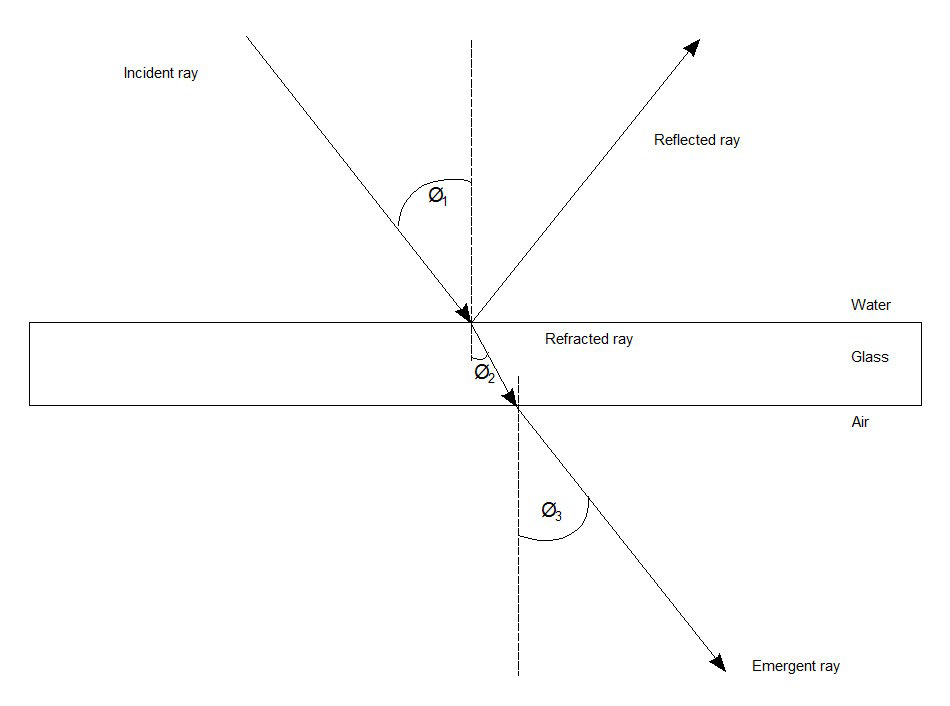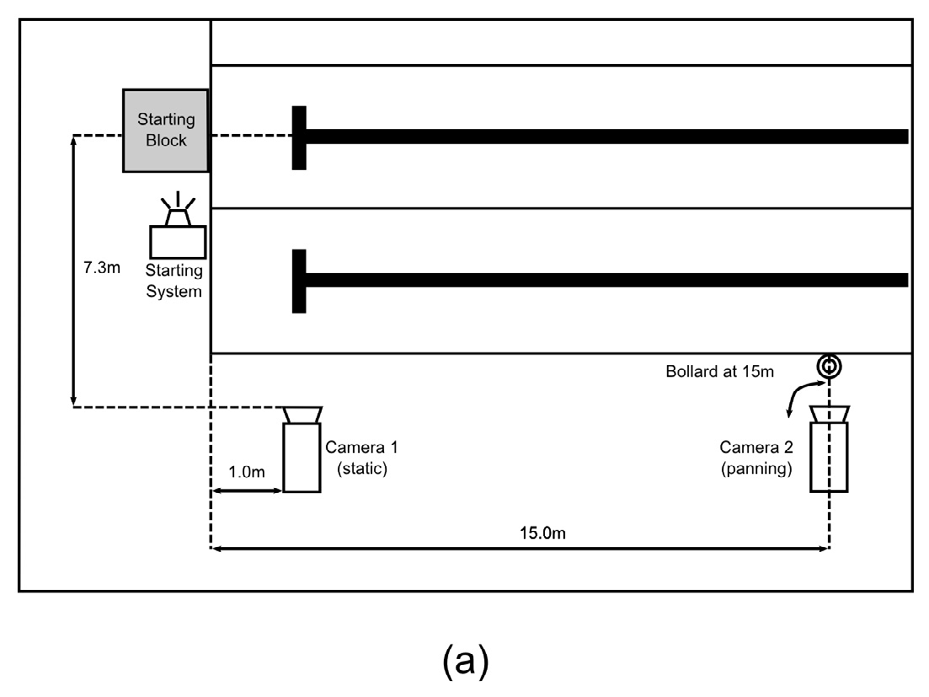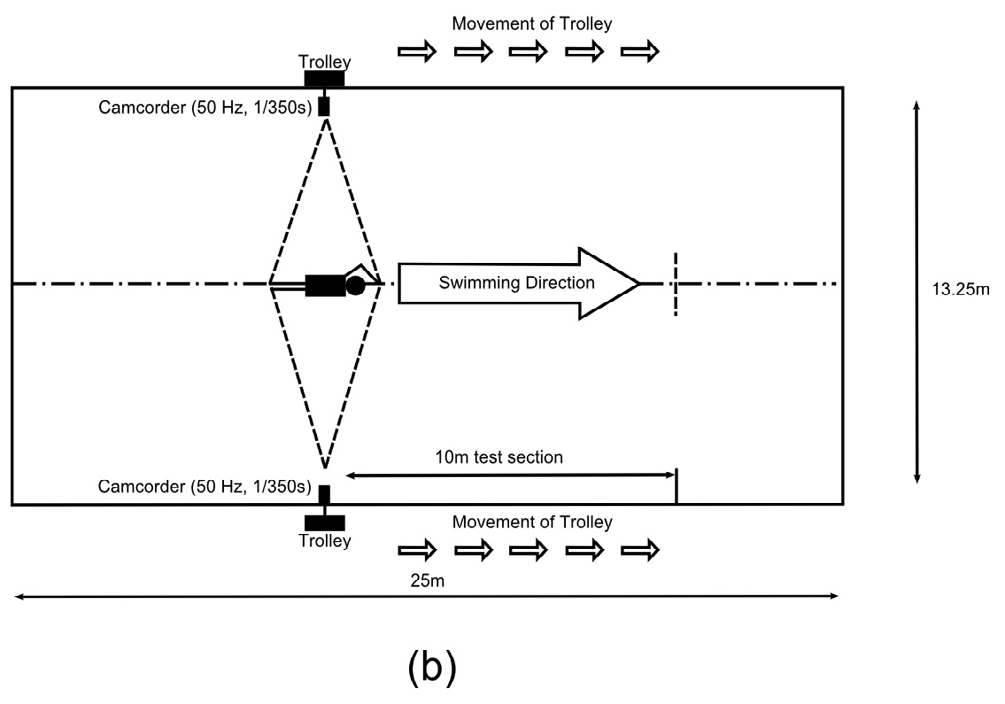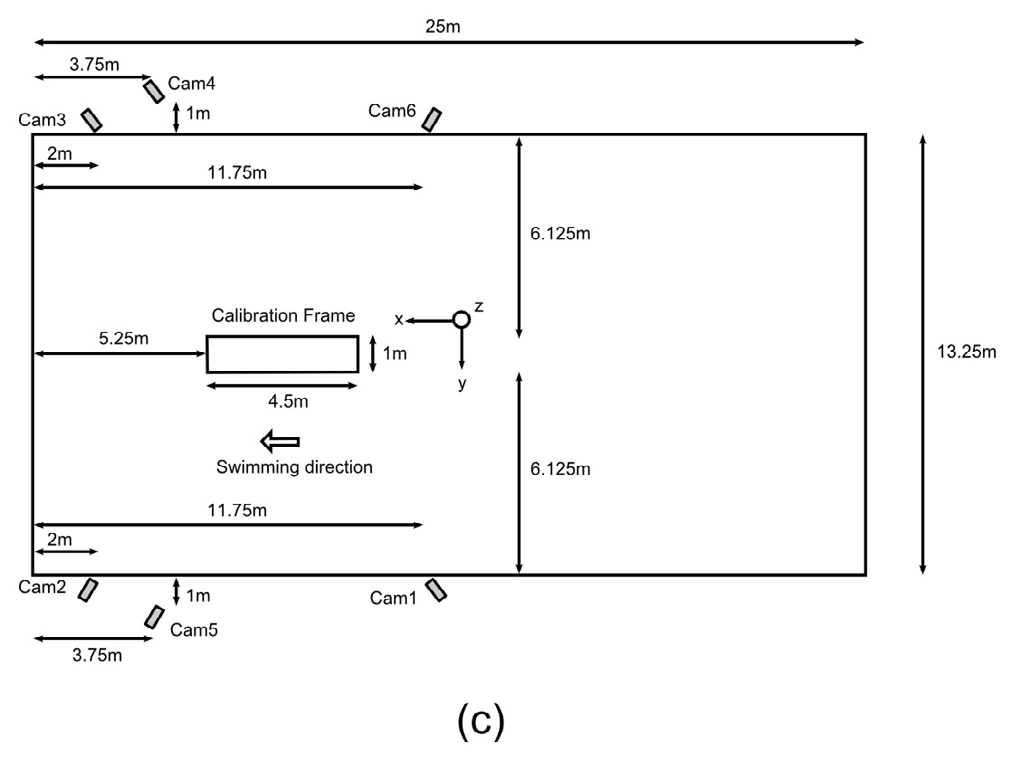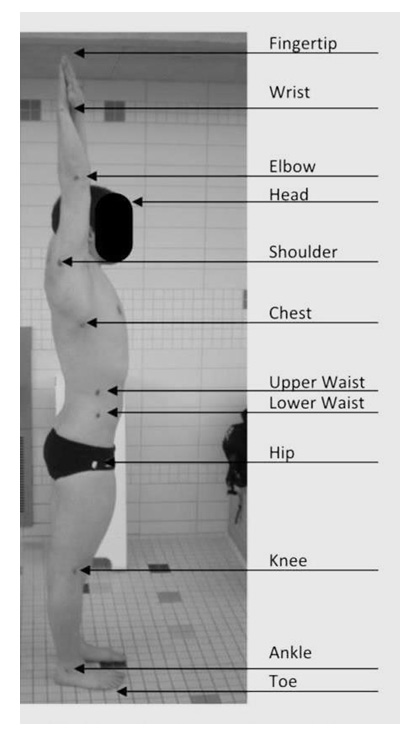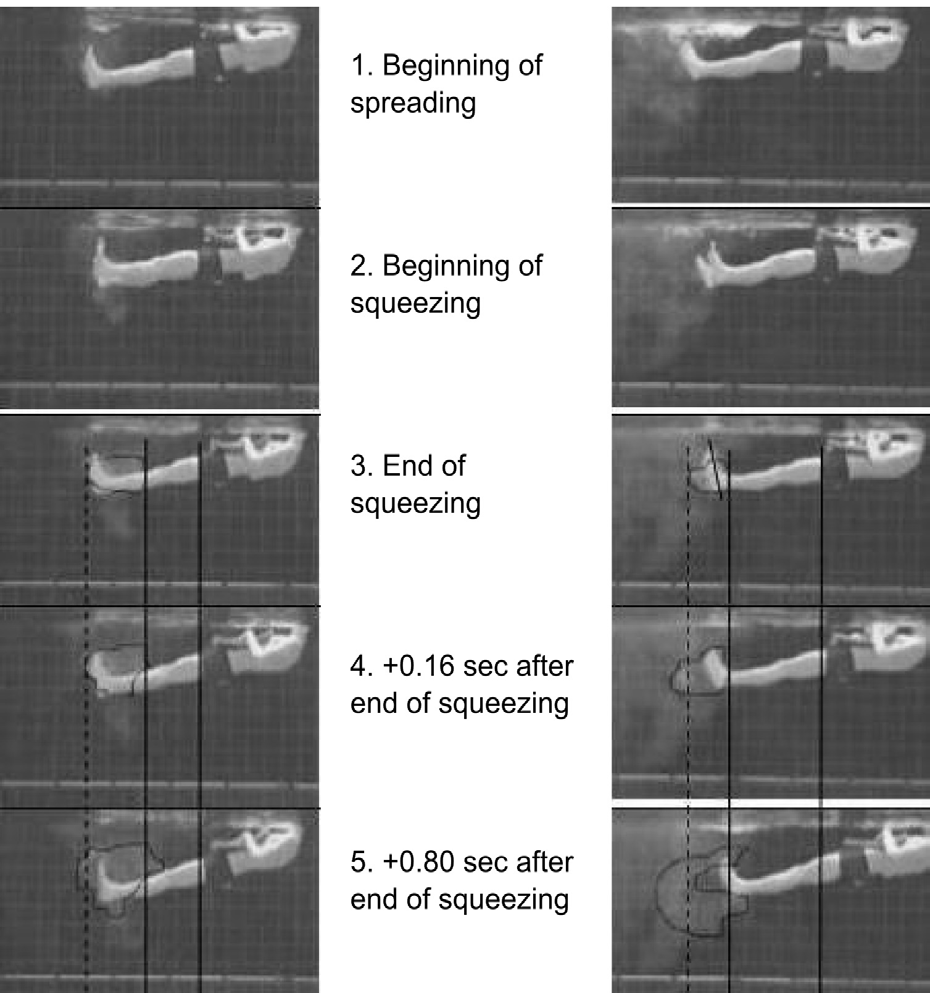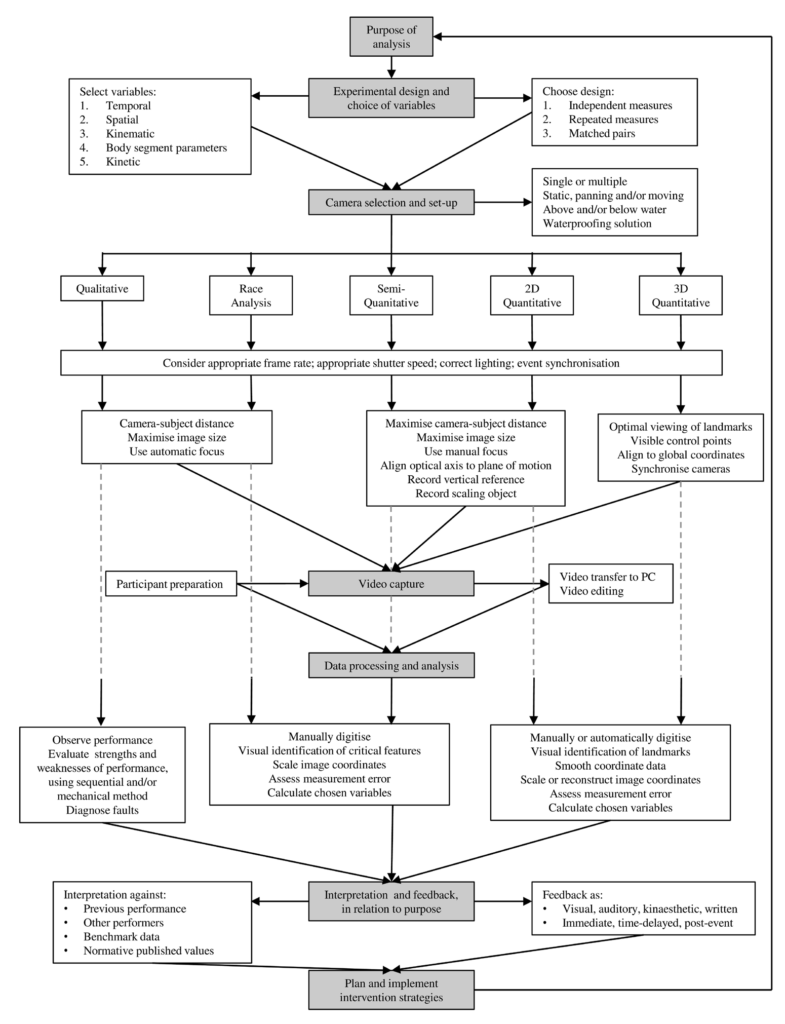1. Payton CJ. Motion analysis using video. In: Payton CJ, Bartlett R, eds. Biomechanical evaluation of movement in sport and exercise: The British Association of Sport and Exercise Sciences guidelines. Abingdon: Routledge; 2008b: 8-32.
2. Phillips E, Farrow D, Ball K, Helmer R. Harnessing and understanding feedback technology in applied settings. Sports Medicine. 2013; 3(10): 919-925. doi: 10.1007/s40279-013-0072-7
3. Wang JR, Parameswaran N. Survey of sports video analysis: research issues and applications. Paper presented at the Proceedings of the Pan-Sydney area workshop on visual information processing. 2004.
4. Wilson BD. Development in video technology for coaching. Sports Technology. 2008; 1(1): 34-40. doi: 10.1080/19346182.2008.9648449
5. Barris S, Button C. A review of vision-based motion analysis in sport. Sports Medicine. 2008; 38(12): 1025-1043.
doi: 10.2165/00007256-200838120-00006
6. Moeslund TB, Hilton A, Krüger V. A survey of advances in vision-based human motion capture and analysis. Computer Vision and Image Understanding. 2006; 104(2-3): 90-126. doi: 10.1016/j.cviu.2006.08.002
7. Poppe R. Vision-based human motion analysis: an overview. Computer Vision and Image Understanding. 2007; 108(1-2): 4-18.
doi: 10.1016/j.cviu.2006.10.016
8. Liebermann DG, Katz L, Hughes MD, Bartlett RM, McClements J, Franks IM. Advances in the application of information technology to sport performance. Journal of Sports Sciences. 2002; 20(10): 755-769. doi: 10.1080/026404102320675611
9. D’Orazio T, Leo M. A review of vision-based systems for soccer video analysis. Pattern Recognition. 2010; 43(8): 2911-2926.
doi: 10.1016/j.patcog.2010.03.009
10. Wang JR, Parameswaran N. Analyzing tennis tactics from broadcasting tennis video clips. Paper presented at the Proceedings of the 11th International Multimedia Modelling Conference. 2005.
11. Guadagnoli M, Holcomb W, Davis M. The efficacy of video feedback for learning the golf swing. Journal of Sports Sciences. 2002; 20(8): 615-622. doi: 10.1080/026404102320183176
12. Smith DJ, Norris SR, Hogg JM. Performance evaluation of swimmers: scientific tools. Sports Medicine. 2002; 32(9): 539-554. doi: 10.2165/00007256-200232090-00001
13. Mooney R, Corley G, Godfrey A, et al. Analysis of swimming performance: perceptions and practices of US-based swimming coaches. Journal of Sports Sciences. 2015; 1-9. doi: 10.1080/02640414.2015.1085074
14. Vorontsov AR, Rumyantsev VA. Propulsive Forces in Swimming. In: Zatsiorsky VM, ed. Biomechanics in Sport: Performance, enhancement and injury prevention. Oxford: International Olympic Committee. Blackwell Science Ltd, 2008: 205-231.
15. Lees A. Technique analysis in sports: a critical review. Journal of Sports Sciences. 2002; 20(10): 813-828. doi: 10.1080/026404102320675657
16. Counsilman JE. Forces in swimming two types of crawl stroke. American Association for Health, Physical Education and Recreation. 1955; 26(2): 127-139. doi: 10.1080/10671188.1955.10612813
17. Maglischo EW. Swimming fastest. Champaign, IL: Human Kinetics, 2003.
18. Schleihauf R. A hydrodynamic analysis of swimming propulsion. Swimming III, 1979: 70-109.
19. Toussaint HM, Truijens M. Biomechanical aspects of peak performance in human swimming. Animal Biology. 2005; 55(1): 17-40.
doi: 10.1163/1570756053276907
20. Callaway AJ, Cobb JE, Jones I. A comparison of video and accelerometer based approaches to performance monitoring in swimming. International Journal of Sports Science & Coaching. 2009; 4(1): 139-153. doi: 10.1260/1747-9541.4.1.139
21. Figueiredo P, MacHado L, Vilas-Boas J, Fernandes R. Reconstruction error of calibration volume’s coordinates for 3D swimming kinematics. Journal of Human Kinetics. 2011; 29(1): 35-40. doi: 10.2478/v10078-011-0037-6
22. Kwon YH, Casebolt JB. Effects of light refraction on the accuracy of camera calibration and reconstruction in underwater motion analysis. Sports Biomechanics. 2006; 5(2): 315-340. doi: 10.1080/14763140608522881
23. Silvatti AP, Cerveri P, Telles T, Dias FAS, Baroni G, Barros RML. Quantitative underwater 3D motion analysis using submerged video cameras: accuracy analysis and trajectory reconstruction. Computer Methods in Biomechanics and Biomedical Engineering. 2013; 16(11): 1240-1248.
doi: 10.1080/10255842.2012.664637
24. Cohen J. Statistical power analysis for the behavioural sciences. 2nd ed. Lawrence Erlbaun Associates. 1988.
25. Ceseracciu E, Sawacha Z, Fantozzi S, et al. Markerless analysis of front crawl swimming. Journal of Biomechanics. 2011; 44(12): 2236-2242.
doi: 10.1016/j.jbiomech.2011.06.003
26. Psycharakis SG, McCabe CB. Shoulder and hip roll differences between breathing and non-breathing conditions in front crawl swimming. Journal of Biomechanics. 2011; 44(9): 1752-1756. doi: 10.1016/j.jbiomech.2011.04.004
27. de Jesus K, Figueiredo PA, Gonca̧lves P, Vilas-Boas JP, Fernandes RJ. Effects of fatigue on kinematical parameters during submaximal and maximal 100-m butterfly bouts. Journal of Applied Biomechanics. 2012; 28(5): 599-607. doi: 10.1123/jab.28.5.599
28. Figueiredo P, Seifert L, Vilas-Boas JP, Fernandes RJ. Individual profiles of spatio-temporal coordination in high intensity swimming. Human Movement Science. 2012; 31(5): 1200-1212. doi: 10.1016/j.humov.2012.01.006
29. Komar J, Lepretre PM, Alberty M, et al. Effect of increasing energy cost on arm coordination in elite sprint swimmers. Human Movement Science. 2012; 31(3): 620-629. doi: 10.1016/j.humov.2011.07.011
30. McCabe CB, Sanders RH. Kinematic differences between front crawl sprint and distance swimmers at a distance pace. Journal of Sports Sciences. 2012; 30(6): 601-608. doi: 10.1080/02640414.2012.660186
31. Martens J, Daly D. Qualitative evaluation of water displacement in simulated analytical breaststroke movements. Journal of Human Kinetics. 2012; 32: 53-63. doi: 10.2478/v10078-012-0023-7
32. Puel F, Morlier J, Avalos M, Mesnard M, Cid M, Hellard P. 3D kinematic and dynamic analysis of the front crawl tumble turn in elite male swimmers. Journal of Biomechanics. 2012; 45(3): 510-515. doi: 10.1016/j.jbiomech.2011.11.043
33. Takeda T, Takagi H, Tsubakimoto S. Effect of inclination and position of new swimming starting block’s back plate on track start performance. Sports Biomechanics. 2012; 11(3): 370-381. doi: 10.1080/14763141.2011.637122
34. Thow JL, Naemi R, Sanders RH. Comparison of modes of feedback on glide performance in swimming. Journal of Sports Sciences. 2011; 30(1): 43-52. doi: 10.1080/02640414.2011.624537
35. Bideault G, Herault R, Seifert L. Data modelling reveals inter-individual variability of front crawl swimming. Journal of Science and Medicine in Sport. 2013; 16(3): 281-285. doi: 10.1016/j.jsams.2012.08.001
36. Ceccon S, Ceseracciu E, Sawacha Z, et al. Motion analysis of front crawl swimming applying CAST technique by means of automatic tracking. Journal of Sports Sciences. 2013; 31(3): 276-287. doi: 10.1080/02640414.2012.729134
37. de Jesus K, Figueiredo P, Gonçalves P, Pereira SM, Vilas-Boas JP, Fernandes RJ. Backstroke start kinematic and kinetic changes due to different feet positioning. Journal of Sports Sciences. 2013; 31(15): 1665-1675. doi: 10.1080/02640414.2013.794298
38. Gourgoulis V, Boli A, Aggeloussis N, et al. The effect of leg kick on sprint front crawl swimming. Journal of Sports Sciences. 2013; 32(3): 278-289. doi: 10.1080/02640414.2013.823224
39. Silva AF, Figueiredo P, Seifert L, Soares S, Vilas-Boas JP, Fernandes RJ. Backstroke technical characterization of 11-13 year-old swimmers. Journal of Sports Science and Medicine. 2013; 12(4): 623-629.
40. Strzala M, Krezalek P, Głab G, et al. Intra-cyclic phases of arm-leg movement and index of coordination in relation to sprint breaststroke swimming in young swimmers. Journal of Sports Science and Medicine. 2013; 12(4): 690-697.
41. Veiga S, Cala A, Frutos PG, Navarro E. Kinematical comparison of the 200 m backstroke turns between national and regional level swimmers. Journal of Sports Science and Medicine. 2013; 12(4): 730-737.
42. Atkison RR, Dickey JP, Dragunas A, Nolte V. Importance of sagittal kick symmetry for underwater dolphin kick performance. Human Movement Science. 2014; 33: 298-311. doi: 10.1016/j.humov.2013.08.013
43. Cohen RCZ, Cleary PW, Harrison SM, Mason BR, Pease DL. Pitching effects of buoyancy during four competitive swimming strokes. Journal of Applied Biomechanics. 2014; 30(5): 609-618. doi: 10.1123/jab.2013-0260
44. do Couto JGM, Franken M, Castro FAS. Influence of different breathing patterns on front crawl kinematics. Journal of Kinanthropometry and Human Performance. 2014; 17(1): 82-90.
45. Gourgoulis V, Aggeloussis N, Mavridis, G, et al. Acute effect of front crawl sprint resisted swimming on the propulsive forces of the hand. Journal of Applied Biomechanics. 2013; 29(1): 98-104. doi: 10.1123/jab.29.1.98
46. Monnet T, Samson M, Bernard A, David L, Lacouture P. Measurement of three-dimensional hand kinematics during swimming with a motion capture system: a feasibility study. Sports Engineering. 2014; 1-11.
47. Schnitzler C, Seifert L, Chollet D, Toussaint H. Effect of aerobic training on inter-arm coordination in highly trained swimmers. Human Movement Science. 2014; 33(1): 43-53. doi: 10.1016/j.humov.2013.12.004
48. Takeda T, Itoi O, Takagi H, Tsubakimoto S. Kinematic analysis of the backstroke start: Differences between backstroke specialists and non-specialists. Journal of Sports Sciences. 2014; 32(7): 635-641.
49. Seifert L, Komar J, Crettenand F, Dadashi F, Aminian K, Millet GP. Inter-limb coordination and energy cost in swimming. Journal of Science and Medicine in Sport. 2014; 17(4): 439-444.
50. Veiga S, Cala A, Frutos PG, Navarro E. Comparison of starts and turns of national and regional level swimmers by individualized-distance measurements. Sports Biomechanics. 2014; 13(3): 285-295. doi: 10.1080/14763141.2014.910265
51. Zatoń K, Szczepan S. The impact of immediate verbal feedback on the improvement of swimming technique. Journal of Human Kinetics. 2014; 41: 143-154. doi: 10.2478/hukin-2014-0042
52. Gatta G, Cortesi M, Lucertini F, Benelli P, Sisti D, Fantozzi S. Path linearity of elite swimmers in a 400 m front crawl competition. Journal of Sports Science and Medicine. 2015; 14(1): 69-74.
53. Osborough C, Daly D, Payton C. Effect of swim speed on leg-to-arm coordination in unilateral arm amputee front crawl swimmers. Journal of Sports Sciences. 2015; 33(14): 1523-1531.
54. Thomas JR, Nelson JK. Research methods in physical activity. 4th ed. Champaign, IL: Human Kinetics, 2001.
55. Gourgoulis V, Aggeloussis N, Vezos N, Kasimatis P, Antoniou P, Mavromatis G. Estimation of hand forces and propelling efficiency during front crawl swimming with hand paddles. Journal of Biomechanics. 2008; 41(1): 208-215.
56. Kwon YH, Kwak CS. Development of an inverse-persicope for underwater motion analysis in swimming. Sport Science. 1996; 7: 1-7.
57. Payton CJ, Baltzopoulos V, Bartlett RM. Contributions of rotations of the trunk and upper extremity to hand velocity during front crawl swimming. Journal of Applied Biomechanics. 2002; 18(3): 243-256.
58. Yanai T, Hay JG, Gerot JT. Three-dimensional videography of swimming with panning periscopes. Journal of Biomechanics. 1996; 29(5): 673-678.
59. Tor E, Ball K, Pease, D, Hopkins W. A comparison between single and multi-camera swimming race analysis systems. Paper presented at the International Society of Biomechanics in Sport, Melbourne, Australia. 2012.
60. Mooney R. A biomechanical analysis of the swimming track start: A comparison of two starting block designs. Paper presented at the Proceedings of the British Association of Sport & Exercise Sciences Annual Conference, UK: University of Essex. 2011.
61. Sanders, RH, Psycharakis S, McCabe CB, et al. Analysis of swimming technique: State of the art applications and implications. Portuguese Journal of Sport Sciences. 2006; 6(2): 20-24.
62. Chollet D, Chalies JC, Chatard JC. A new index of coordination for the crawl: description and usefulness. International Journal of Sports Medicine. 2000; 20: 54-59.
63. Nikodelis T, Kollias I, Hatzitaki V. Bilateral inter-arm coordination in freestyle swimming: Effect of skill level and swimming speed. Journal of Sports Science. 2005; 23(7): 737-745.
64. Cappaert JM, Pease, DL, Troup J. Three-dimensional analysis of the men’s 100-m freestyle during the 1992 Olympic games. Journal of Applied Biomechanics. 1995; 11: 103-112.
65. Lauder MA, Dabnichki P, Bartlett RM. Improved accuracy and reliability of sweepback angle, pitch angle and hand velocity calculations in swimming. Journal of Biomechanics. 2001; 34(1): 31-39. doi: 10.1007/s12283-011-0070-7
66. Atkinson G, Nevill A. Statistical methods for assessing measurement error (reliability) in variables relevant to sports medicine. Sports Medicine. 1988; 26: 217-238.
67. Bland JM, Altman DG. Statistical methods for assessing agreement between two methods of clinical measurement. The Lancet. 1986; 327(8476): 307-310.
68. Hughes M, Cooper S, Nevill A. Analysis procedures for nonparametric data from performance analysis. International Journal of Performance Analysis in Sport. 2002; 2: 6-20.
69. Payton CJ, Bartlett RM. Estimating propulsive forces in swimming from three-dimensional kinematic data. Journal of Sports Sciences. 1995; 13(6): 447-454.
70. Le Sage T, Bindel A, Conway PP, Justham, LM, Slawson SE, West AA. Embedded programming and real time signal processing of swimming strokes. Sports Engineering. 2011; 14: 1-14. doi: 10.1007/s12283-011-0070-7
71. Magalhaes FA, Sawacha Z, Di Michele R, Cortesi M, Gatta G, Fantozzi S. Effectiveness of an automatic tracking software in underwater motion analysis. Journal of Sports Science & Medicine. 2013; 12(4): 660-667.
72. Psycharakis SG, Sanders RH. Shoulder and hip roll changes during 200-m front crawl swimming. Medicine and Science in Sports and Exercise. 2008; 40(12): 2129-2136.
73. Kjendlie PL, Olstad BH. Automatic 3D motion capture of swimming: marker resistance. Medicine & Science in Sports & Exercise. 2012; 44(5): S320.
74. Knudson D. Qualitative biomechanical principles for application in coaching. Sports Biomechanics. 2007; 6(1): 109-118.
75. Briki W, Den Hartigh RJR, Hauw D, Gernigon C. A qualitative exploration of the psychological contents and dynamics of momentum in sport. International Journal of Sport Psychology. 2012; 43(5): 365-384.
76. Clark SE, Ste-Marie DM. The impact of self-as-a-model interventions on children’s self-regulation of learning and swimming performance. Journal of Sports Sciences. 2007; 25(5): 577-586.
77. Dowrick PW. A review of self modeling and related interventions. Applied and Preventive Psychology. 1999; 8(1): 23-39.
doi: 10.1016/S0962-1849(99)80009-2
78. Ste-Marie DM, Rymal A, Vertes K, Martini R. SelfModeling and competitive beam performance enhancement examined within a self-regulation perspective. Journal of Applied Sport Psychology. 2011; 23(3): 292-307. doi: 10.1080/10413200.2011.558049
79. Weinberg RS, Gould D. Foundations of sport and exercise psychology. Champaign, IL: Human Kinetics, 2011.
80. Mason BR. Biomechanical services and research for top level swimming: the Australian Institute of Sport model. Paper presented at the Biomechanics and Medicine in Swimming XI, Olso, Norway. 2010.
81. Payton CJ. Biomechanics support for British world class disability swimming. SportEx Medicine. 2008a; 36(4): 9-13.
82. Rucci JA, Tomporowski PD. Three types of kinematic feedback and the execution of the hang power clean. The Journal of Strength & Conditioning Research. 2010; 24(3): 771-778. doi: 10.1519/JSC.0b013e3181cbab96
83. Becker T, Havriluk R. Quantitative data supplements qualitative evaluation of butterfly swimming. Paper presented at the Biomechanics and medicine in swimming XI, Oslo. 2010.
84. BardenJM, Kell RT, Kobsar D. The effect of critical speed and exercise intensity on stroke phase duration and bilateral asymmetry in 200-m front crawl swimming. Journal of Sports Sciences. 2011; 29(5): 517-526. doi: 10.1080/02640414.2010.543912
85. Seifert L, Leblanc H, Chollet D, Delignieres D. Inter-limb coordination in swimming: effect of speed and skill level. Human Movement Science. 2010; 29(1): 103-113.
86. Evershed J, Burkett B, Mellifont R. Musculoskeletal screening to detect asymmetry in swimming. Physical Therapy in Sport. 2013.
doi: 10.1016/j.ptsp.2013.02.002
87. Seifert L, Chollet D. Modelling spatial-temporal and coordinative parameters in swimming. Journal of Science and Medicine in Sport. 2009; 12(4): 495-499. doi: 10.1016/j.jsams.2008.03.002
88. Lyttle A, Mason B. A kinematic and kinetic analysis of the freestyle and butterfly turns. Journal of Swimming Research. 1997; 12: 7-11.
89. Fulton SK, Pyne DB, Burkett BJ. Validity and reliability of kick count and rate in freestyle using inertial sensor technology. Journal of Sports Sciences. 2009; 27(10): 1051-1058. doi: 10.1080/02640410902998247
90. Barris S, Button C. A review of vision-based motion analysis in sport. Sports Medicine. 2008; 38(12): 1025-1043.
doi: 10.2165/00007256-200838120-00006
91. Slawson SE, Conway PP, Justham LM, West AA. The development of an inexpensive passive marker system for the analysis of starts and turns in swimming. Procedia Engineering. 2010; 2(2): 2727-2733. doi: 10.1016/j.proeng.2010.04.058
92. Cappozzo A, Catani F, Della Croce U, Leardini A. Position and orientation in space of bones during movement: anatomical frame definition and determination. Clinical Biomechanics. 1995; 10(4): 171-178.
93. Dadashi F, Millet GP, Aminian K. Inertial measurement unit and biomechanical analysis of swimming: an update. Swiss Society of Sports Medicine. 2013; 61: 21-26.
94. El-Sallam A, Bennamoun M, Sohel F, Alderson J, Lyttle A, Rossi M. A low cost 3D markerless system for the reconstruction of athletic techniques. Paper presented at the 2013 IEEE Workshop on Applications of Computer Vision (WACV). 2013.
95. Davey N, Anderson M, James DA. Validation trial of an accelerometer-based sensor platform for swimming. Sports Technology. 2008; 1(4-5): 202-207.

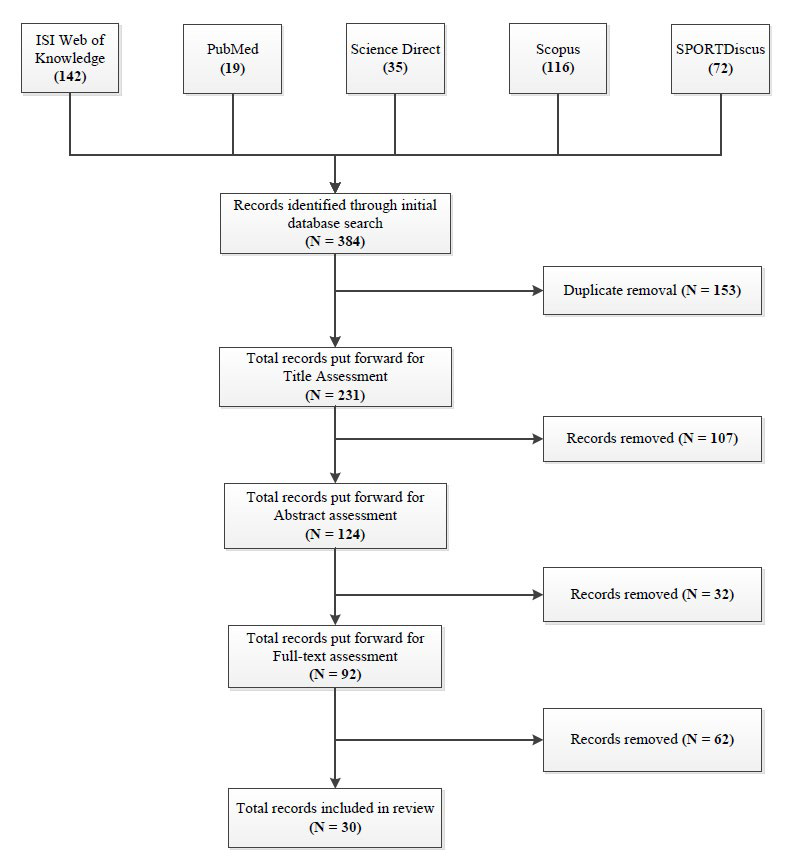
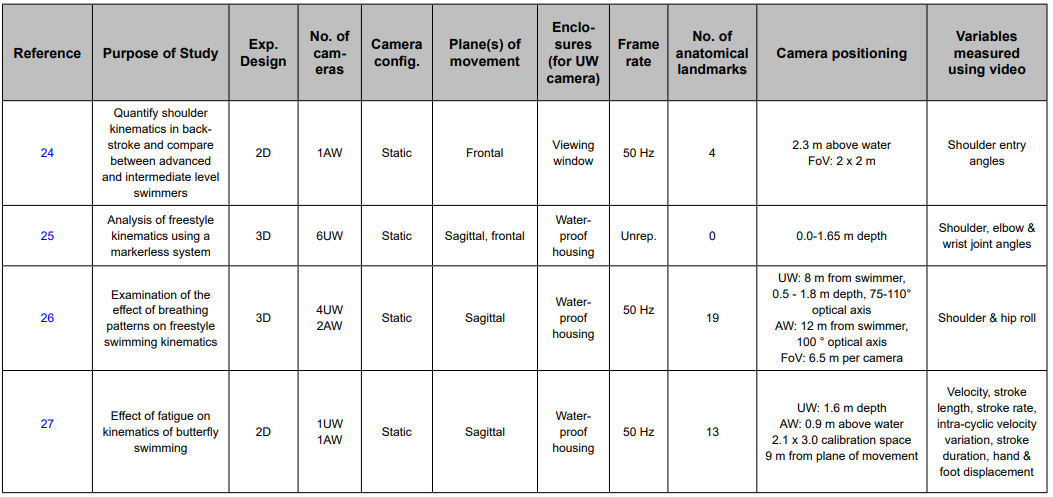
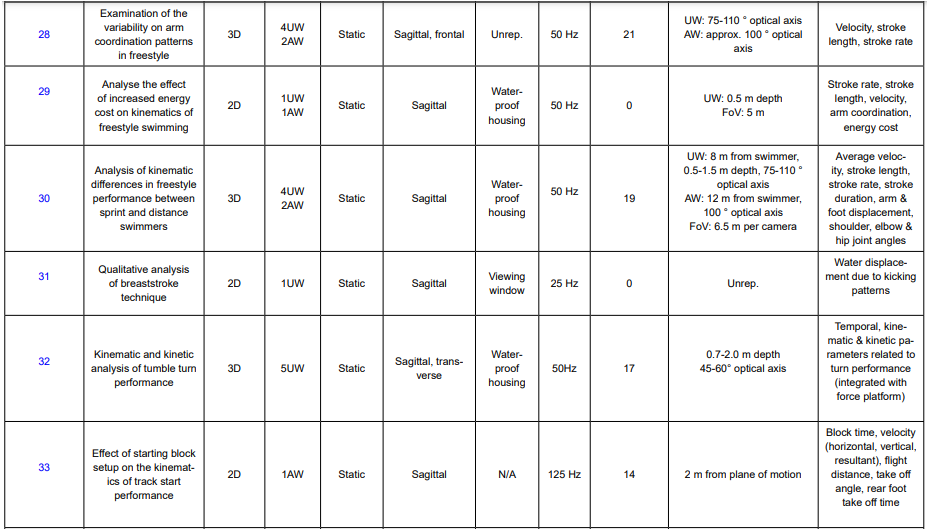
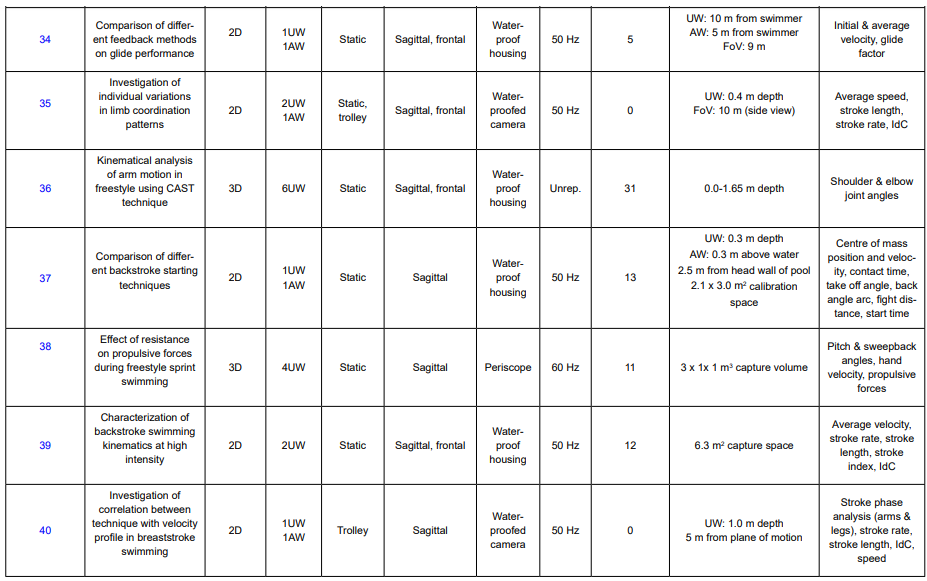
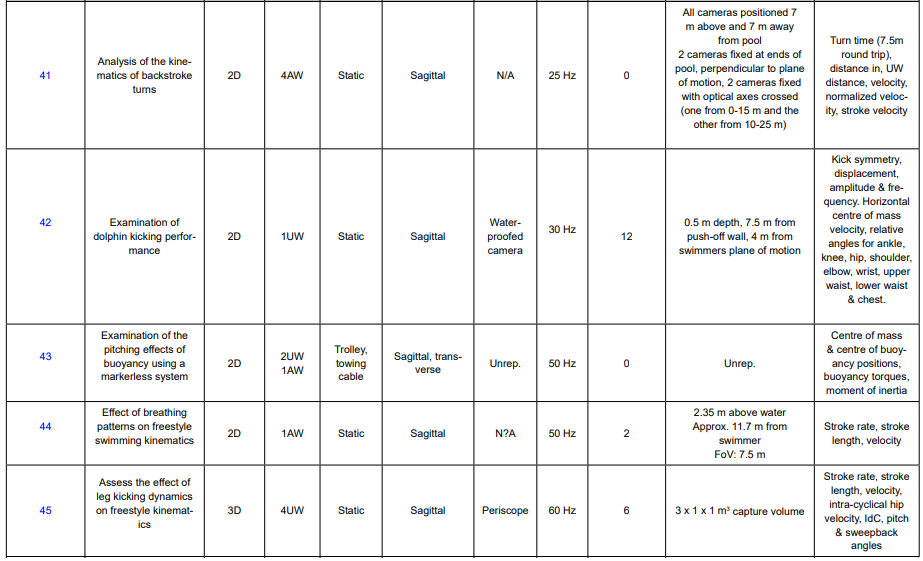



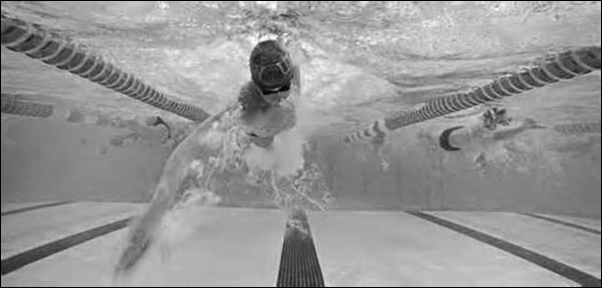
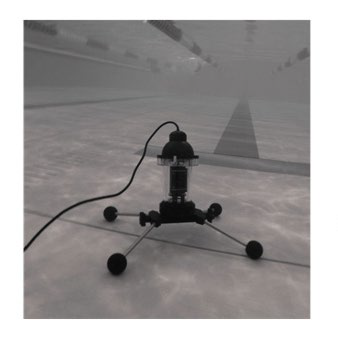 (a)
(a)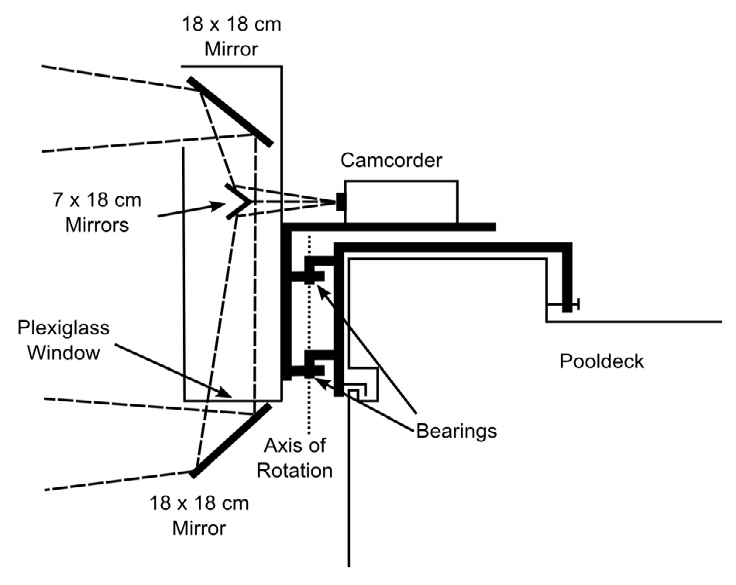 (b)
(b)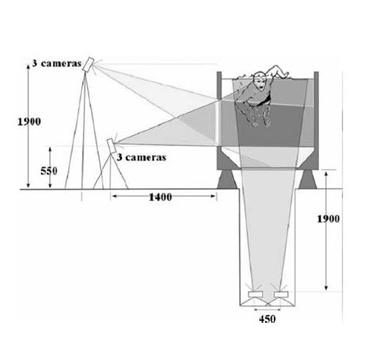 (c)
(c)